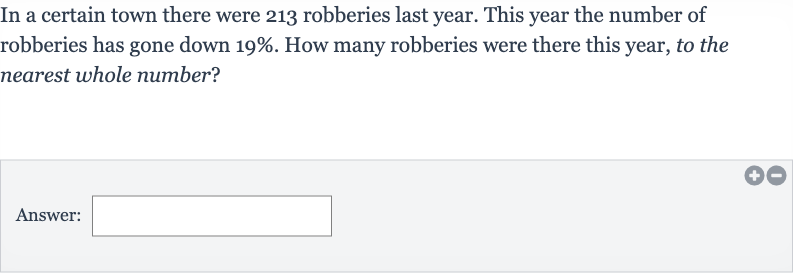AI tutor
Welcome to Bytelearn!
Let’s check out your problem:

In a certain town there were robberies last year. This year the number of robberies has gone down . How many robberies were there this year, to the nearest whole number?Answer:
Full solution
Q. In a certain town there were robberies last year. This year the number of robberies has gone down . How many robberies were there this year, to the nearest whole number?Answer:
- Calculate Decrease in Robberies: Calculate the decrease in the number of robberies by finding of last year's total. of robberies = =
- Subtract Decrease from Last Year: Since we are looking for the number of robberies this year, we need to subtract the decrease from last year's total.Number of robberies this year Last year's robberies Decrease in robberiesHowever, we need to round the decrease to the nearest whole number before subtracting. rounded to the nearest whole number is .
- Find This Year's Total: Now, subtract the rounded decrease from last year's total to find this year's total number of robberies.Number of robberies this year = =
More problems from Percent of change: word problems
QuestionGet tutor help
QuestionGet tutor help
